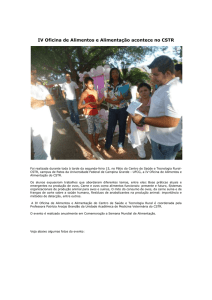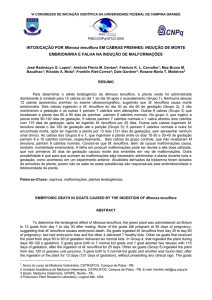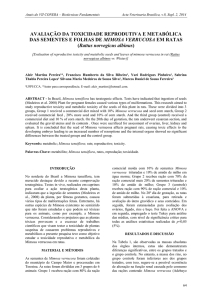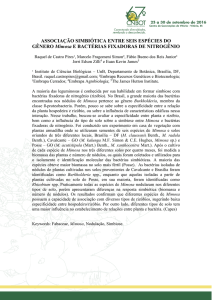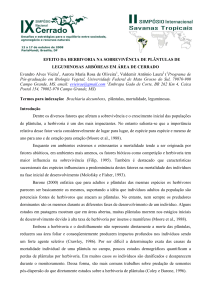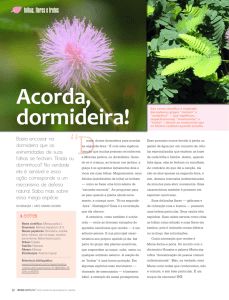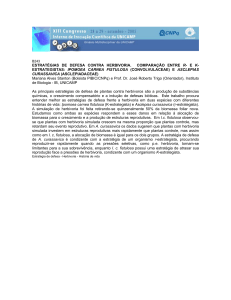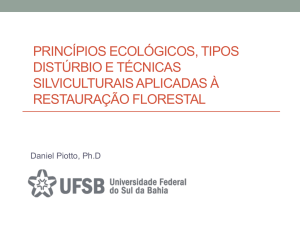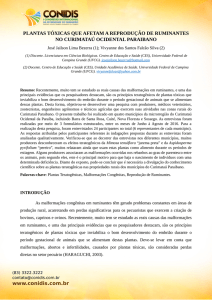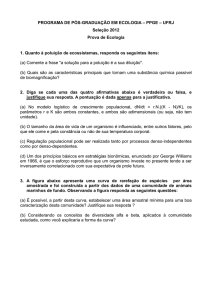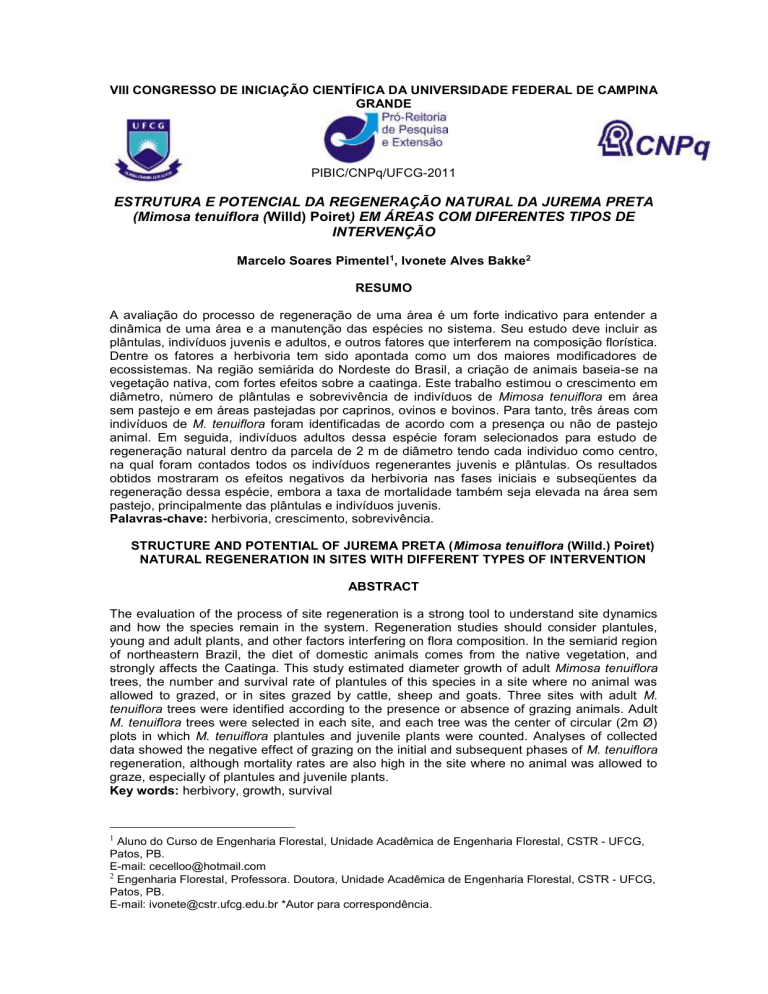
VIII CONGRESSO DE INICIAÇÃO CIENTÍFICA DA UNIVERSIDADE FEDERAL DE CAMPINA
GRANDE
PIBIC/CNPq/UFCG-2011
ESTRUTURA E POTENCIAL DA REGENERAÇÃO NATURAL DA JUREMA PRETA
(Mimosa tenuiflora (Willd) Poiret) EM ÁREAS COM DIFERENTES TIPOS DE
INTERVENÇÃO
Marcelo Soares Pimentel1, Ivonete Alves Bakke2
RESUMO
A avaliação do processo de regeneração de uma área é um forte indicativo para entender a
dinâmica de uma área e a manutenção das espécies no sistema. Seu estudo deve incluir as
plântulas, indivíduos juvenis e adultos, e outros fatores que interferem na composição florística.
Dentre os fatores a herbivoria tem sido apontada como um dos maiores modificadores de
ecossistemas. Na região semiárida do Nordeste do Brasil, a criação de animais baseia-se na
vegetação nativa, com fortes efeitos sobre a caatinga. Este trabalho estimou o crescimento em
diâmetro, número de plântulas e sobrevivência de indivíduos de Mimosa tenuiflora em área
sem pastejo e em áreas pastejadas por caprinos, ovinos e bovinos. Para tanto, três áreas com
indivíduos de M. tenuiflora foram identificadas de acordo com a presença ou não de pastejo
animal. Em seguida, indivíduos adultos dessa espécie foram selecionados para estudo de
regeneração natural dentro da parcela de 2 m de diâmetro tendo cada individuo como centro,
na qual foram contados todos os indivíduos regenerantes juvenis e plântulas. Os resultados
obtidos mostraram os efeitos negativos da herbivoria nas fases iniciais e subseqüentes da
regeneração dessa espécie, embora a taxa de mortalidade também seja elevada na área sem
pastejo, principalmente das plântulas e indivíduos juvenis.
Palavras-chave: herbivoria, crescimento, sobrevivência.
STRUCTURE AND POTENTIAL OF JUREMA PRETA (Mimosa tenuiflora (Willd.) Poiret)
NATURAL REGENERATION IN SITES WITH DIFFERENT TYPES OF INTERVENTION
ABSTRACT
The evaluation of the process of site regeneration is a strong tool to understand site dynamics
and how the species remain in the system. Regeneration studies should consider plantules,
young and adult plants, and other factors interfering on flora composition. In the semiarid region
of northeastern Brazil, the diet of domestic animals comes from the native vegetation, and
strongly affects the Caatinga. This study estimated diameter growth of adult Mimosa tenuiflora
trees, the number and survival rate of plantules of this species in a site where no animal was
allowed to grazed, or in sites grazed by cattle, sheep and goats. Three sites with adult M.
tenuiflora trees were identified according to the presence or absence of grazing animals. Adult
M. tenuiflora trees were selected in each site, and each tree was the center of circular (2m Ø)
plots in which M. tenuiflora plantules and juvenile plants were counted. Analyses of collected
data showed the negative effect of grazing on the initial and subsequent phases of M. tenuiflora
regeneration, although mortality rates are also high in the site where no animal was allowed to
graze, especially of plantules and juvenile plants.
Key words: herbivory, growth, survival
1
Aluno do Curso de Engenharia Florestal, Unidade Acadêmica de Engenharia Florestal, CSTR - UFCG,
Patos, PB.
E-mail: [email protected]
2
Engenharia Florestal, Professora. Doutora, Unidade Acadêmica de Engenharia Florestal, CSTR - UFCG,
Patos, PB.
E-mail: [email protected] *Autor para correspondência.

